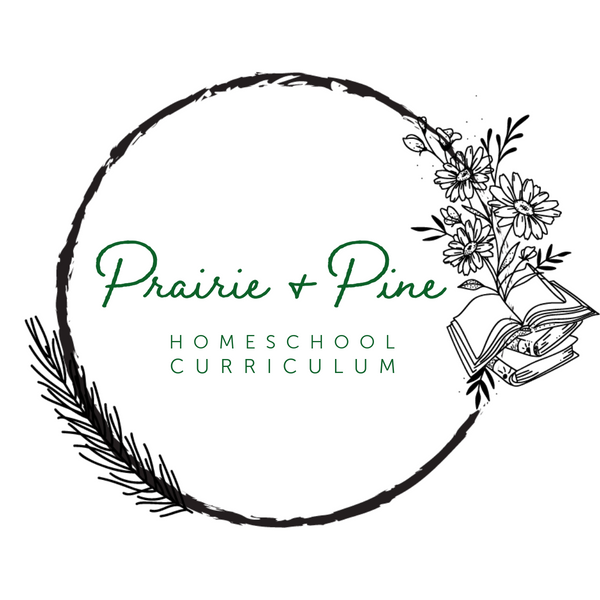Why the Frayer Model is a Game-Changer Vocabulary Strategy Across All Subjects
If you’ve been homeschooling for any length of time, you know that vocabulary instruction is essential—but it can sometimes feel dry or disconnected. That’s why one of the best tools you can add to your homeschool toolbox is the Frayer Model. At Prairie & Pine Curriculum, we use this strategy in every single one of our middle and high school unit studies because it is both simple and effective. Let’s explore what it is, how to use it, and why it’s such a powerful way to deepen your student’s understanding of words.
What is the Frayer Model?
The Frayer Model is a graphic organizer that helps students go beyond memorizing definitions. Instead, it encourages them to think critically about a word by exploring it from multiple angles. The model is usually divided into four sections:
- Definition – What does the word mean?
- Characteristics – What makes this word unique? What features does it have
- Examples – What are some clear examples of this word in action?
- Non-Examples – What are some things that are not examples of this word?
By filling out each section, students build a stronger, more flexible understanding of vocabulary words.
How to Use the Frayer Model in Homeschooling
Using the Frayer Model is simple, but incredibly effective. Here’s a step-by-step example you can try in your homeschool:
Choose a word from your lesson. For example, in a literature study you might choose the word allegory.
Work through the sections together with your student:
- Definition: A story, poem, or picture that can be interpreted to reveal a hidden meaning.
- Characteristics: Often moral or political; uses symbolism; teaches a deeper lesson.
- Examples: Animal Farm by George Orwell, The Pilgrim's Progress by John Bunyan
- Non-Examples: A Simple fable with no deeper meaning, a news article.
Discuss connections—how does this word show up in real reading, writing, or life?
You can use the Frayer Model for literature, history, science, or even math vocabulary. The process works across subjects!
Example: Frayer Model for the Word Revolution
- Definition: A forcible overthrow of a government or social order.
- Characteristics: Political, involves change, often includes conflict.
- Examples: American Revolution, French Revolution.
- Non-Examples: Peaceful election, everyday law-making.
This approach not only teaches the meaning of revolution but also helps students distinguish between what counts as a revolution and what does not.
Why We Use the Frayer Model in Every Prairie & Pine Unit Study
At Prairie & Pine Curriculum, we believe vocabulary should never feel like busywork. Instead, it should unlock doors to deeper understanding. That’s why you’ll find the Frayer Model embedded in every single one of our middle and high school unit studies.
Here’s why:
- It encourages critical thinking. Students don’t just memorize—they analyze, compare, and connect.
- It works for different learning styles. Visual learners love the graphic layout, while analytical thinkers thrive on categorizing information.
- It sticks. When students see examples, non-examples, and characteristics, the meaning of a word stays with them far longer.
- It builds independence. Once students know how to use the Frayer Model, they can apply it on their own across any subject.
By the end of a Prairie & Pine unit, students don’t just know new words—they can use them, explain them, and see them in context. And that’s exactly what builds confident readers and writers.
Final Thoughts
The Frayer Model may look simple, but it is one of the most powerful strategies you can use in your homeschool. Whether you’re teaching literature, science, or history, this method transforms vocabulary from rote memorization into meaningful learning.
And that’s why Prairie & Pine Curriculum incorporates the Frayer Model in every unit study—because it equips students not just with words, but with the tools to understand and use them well.
Download your free Frayer Model template here:
